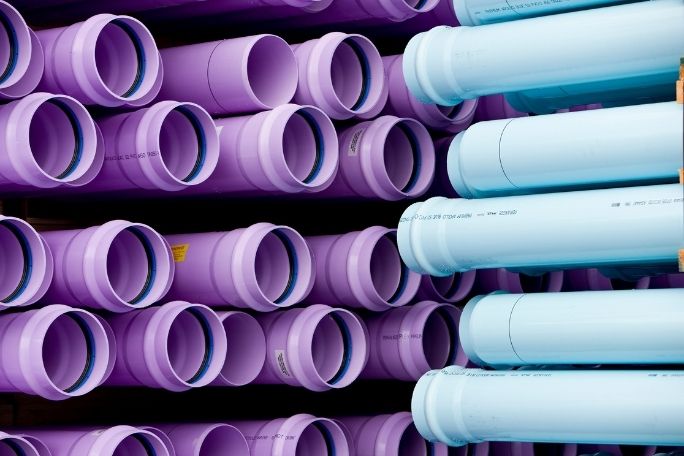Lesson summary
Students learn about the circular economy and how pipe design is integral in ensuring plastic pipes are part of the circular economy. They then get creative with pipes and plan and construct a design incorporating plastic pipes.
Learning intentions:
Students will...
- explore the differences between the linear and circular economy models
- develop designs based on the components and limitations of the materials available to them
- know that plastic pipes can be used in creative designs.
Success criteria:
Students can...
- explain how plastic pipes can be included in the circular economy
- apply creative thinking skills to the planning and execution of a creation that incorporates pipes.
Lesson guides and printables
Curriculum links
Select your curriculum from the options below.
Lesson details
Curriculum mapping
Australian Curriculum (v9.0) content descriptions:
Year 5 & 6 Design and Technologies:
Students learn to:
- generate, iterate and communicate design ideas, decisions and processes using technical terms and graphical representation techniques, including using digital tools (AC9TDE6P02)
- select and use suitable materials, components, tools, equipment and techniques to safely make designed solutions (AC9TDE6P03)
General capabilities: Literacy, Critical and Creative Thinking.
Syllabus outcomes: ST3-2DP-T, ST3-3DP-T.
Cross-curriculum priority: Sustainability.
Relevant parts of Year 5 & 6 Design and Technologies achievement standards:
Students select and justify design ideas and solutions against design criteria that include sustainability.
Skills
This lesson is designed to build students’ competencies in the following skills:
- creativity
- critical thinking
UN Sustainable Development Goals
UN SDG 6: Clean water and sanitation
Target 6.2: By 2030, achieve access to adequate and equitable sanitation and hygiene for all and end open defecation, paying special attention to the needs of women and girls and those in vulnerable situations.
UN SDG 12: Ensure sustainable consumption and production patterns
Target 12.5: By 2030, substantially reduce waste generation through prevention, reduction, recycling and reuse.
Resources required
- Lined paper
- Optional: About the Linear Economy and Circular Economy - Presentation
- Rubric
- Writing materials
Additional info
Level of teacher scaffolding: Medium - facilitate class discussion.
Special thanks to:
Plastics Industry Pipe Association of Australia (PIPA) is a non-profit association that is committed to future-focused leadership. Through research, education, technical expertise and advocacy, they help advance the use of plastic pipes and fittings as a smart, efficient and sustainable solution.
Related professional learning
Visualise Data in the Primary Classroom
Quick summary: In this hands-on course, you will build your ability to use infographics as a learning tool in your curriculum. You’ll discover how to understand infographics and create your own.


Welcome back!
Don't have an account yet?
Log in with:
Create your free Cool.org account.
Many of our resources are free, with an option to upgrade to Cool+ for premium content.
Already have an account?
Sign up with:
By signing up you accept Cool.org's Terms and Conditions(Opens in new tab) and Privacy Policy(Opens in new tab).